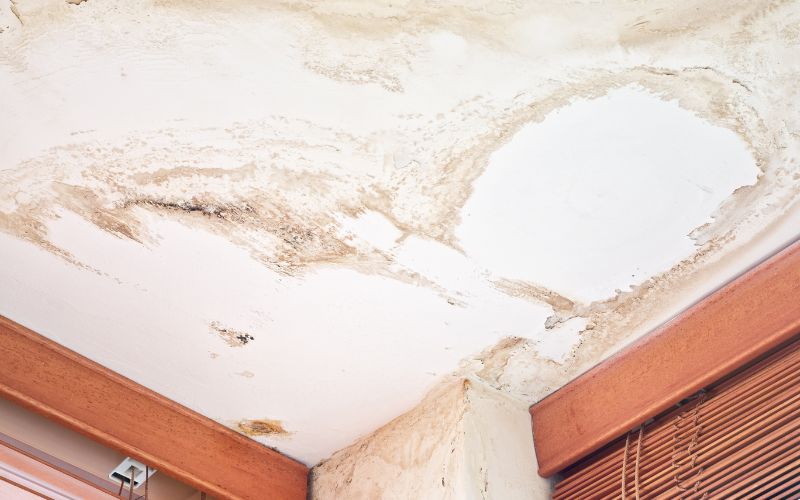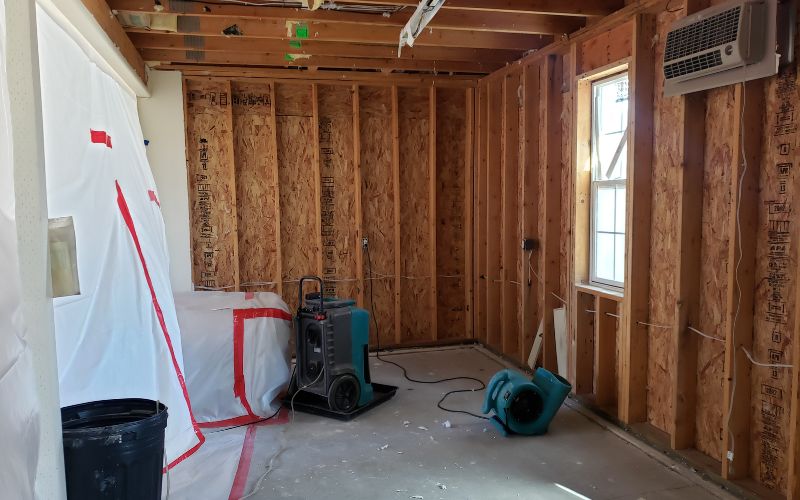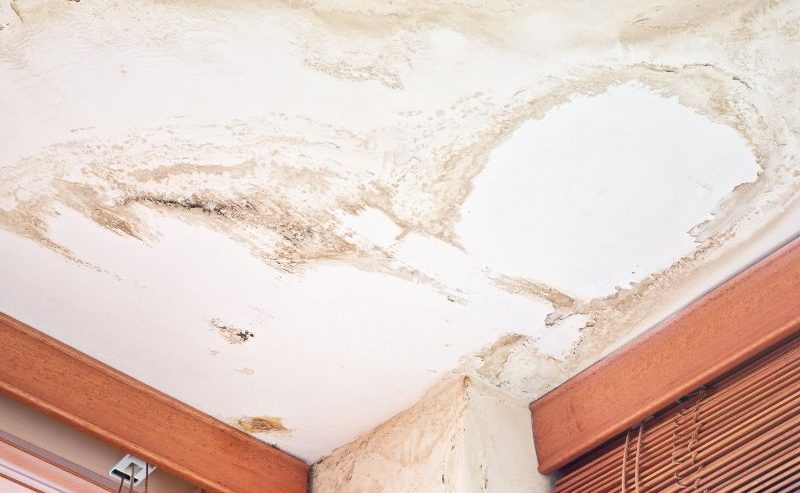
Image by Marco Rosario Venturini Autieri from Getty Images Signature on Canva
Water damage can be a nightmare for any homeowner, and drywall water damage is one of the most common problems. Left unchecked, it can lead to unsightly stains, structural issues, and even mold growth. Addressing it quickly not only saves money but also protects your home’s integrity and your family’s health.
The good news? By learning how to spot, repair, and prevent drywall water damage, you can take control of the situation before it escalates. In this guide, we’ll walk you through everything you need to know to keep your drywall in excellent condition.
How to Spot Water Damage in Drywall
Identifying drywall water damage early is critical to preventing extensive issues. Drywall’s porous nature allows it to absorb moisture quickly, so taking swift action is key. Recognizing the warning signs can help you address the problem promptly and may even require professional water damage restoration services. Here are some common indicators to watch for:
- Discoloration: Yellow, brown, or gray stains on your walls or ceiling are often the first visible signs of water damage.
- Warping or Bubbling: Drywall that looks warped or has bubbles on the surface typically signals moisture behind the surface.
- Peeling Paint or Wallpaper: When water seeps into drywall, it can weaken the bond between the surface and its covering. Look for flaking paint or peeling wallpaper.
- Sagging: If the drywall begins to sag or feel soft when pressed, it’s likely water-saturated.
- Mold Growth: A musty smell or visible mold spots on drywall is a serious indication of water damage. Mold thrives in moist environments and spreads rapidly.
How to Fix Drywall Water Damage

Image by Ethen Dell from Getty Images on Canva
Repairing drywall water damage doesn’t have to be overwhelming, but it does require careful steps to restore the affected area effectively. Acting quickly can prevent further deterioration and eliminate potential health risks like mold growth. Here are the steps to repair water damage in drywall:
1. Stop the Source of Water
Before beginning any repair work, it’s important to address the cause of the water damage. This could involve addressing a leaking pipe, fixing a damaged roof, or sealing foundation cracks. Tackling the source is essential to avoid repeated issues.
2. Thoroughly Dry the Area
Proper drying is critical to prevent further damage and mold growth. A water damage restoration specialist will use advanced equipment like industrial fans and dehumidifiers to make sure all moisture is eliminated. This step safeguards the drywall’s structural integrity and reduces the risk of future complications.
3. Evaluate the Extent of the Damage
A thorough inspection will determine the severity of the drywall water damage. While minor discoloration may be cosmetic, sagging, crumbling, or severely damaged sections often require complete removal and replacement.
4. Remove Damaged Sections
For drywall that has been extensively damaged, professionals will carefully cut and remove the affected areas. Clean, precise cuts are essential to prepare the space for seamless repairs without impacting surrounding areas.
5. Install New Drywall and Patch the Area
After removing the damaged sections, new drywall is installed. Professionals secure it with screws and finish it using joint tape and compound to create a seamless surface. Once dry, sanding prepares the area for repainting and blending with the rest of the wall.
How to Prevent Water Damage in Drywall
Preventing drywall water damage starts with addressing potential water intrusion points and maintaining key areas of your home. A proactive approach can save significant time and money in the long run. Below are some tips to help you avoid water damage in drywall:
- Inspect and Maintain the Roof
Regularly check your roof for leaks, cracks, or missing shingles, especially after storms. Roof damage is a common cause of water entering the home and damaging the drywall. Having a roof inspection can help catch issues early.
- Seal Windows and Doors
Be sure that your windows and doors are properly sealed to prevent water from seeping in. Over time, caulk and seals can degrade, allowing moisture to enter. Replacing worn-out seals and weatherstripping can make a big difference in water protection.
- Fix Plumbing Leaks
Leaky pipes are another major cause of drywall water damage. Regularly inspect your plumbing for any indicators of leaks and fix them promptly. If you experience recurring issues, it may be time to consult a professional to assess any hidden damage.
- Install Proper Drainage
Make sure gutters and downspouts are clean and direct water away from your home’s foundation. Poor drainage can cause water pooling around the base of the house, which can seep into walls and cause water damage in drywall over time.
- Maintain Proper Ventilation
Areas like bathrooms, kitchens, and basements are more prone to moisture buildup. Installing exhaust fans and ensuring good air circulation can help prevent humidity levels from rising and damaging your drywall.
- Inspect Foundation and Basement
Cracks in the foundation or basement walls can allow water to enter, especially during heavy rainfall. Make sure that the foundation is sealed properly, and take measures like installing a sump pump if necessary to keep water out.
FAQs About Drywall Water Damage
How much does it cost to repair drywall water damage?
The cost to repair drywall water damage typically ranges from $600 to $1,550, depending on the damage extent. If mold is found, the costs can rise significantly, as mold remediation can cost between $10 to $20 per square foot. The final expense will be based on the size of the affected area and whether mold or other complications are involved.
Can mold grow on drywall?
Yes, mold can grow on drywall if it absorbs moisture. Since drywall is porous, it can provide an ideal environment for mold to thrive when exposed to water. If you notice a musty smell or see mold spots, it’s important to take action quickly. The best approach is to contact restoration services to remove the mold and resolve the moisture problem at the source.
How can I tell if my drywall water damage is serious?
If you observe noticeable sagging, mold growth, or if the drywall feels soft or spongy to the touch, it’s a strong indication that the water damage is extensive. These signs suggest that the drywall has absorbed a significant amount of moisture, which may need professional help to address properly.
Final Thoughts
Drywall water damage can be intimidating, but with the right understanding and a proactive approach, it’s manageable. By learning to spot the signs early, taking swift action to repair damage, and implementing preventive strategies, you can safeguard your home and avoid unnecessary expenses.
For professional assistance in repairing drywall water damage, get in touch with PuroClean Zephyrhills. Our certified water damage restoration specialists can help restore your home efficiently. Call us now to get expert support today!




 PuroClean Certified Restoration Specialists
PuroClean Certified Restoration Specialists